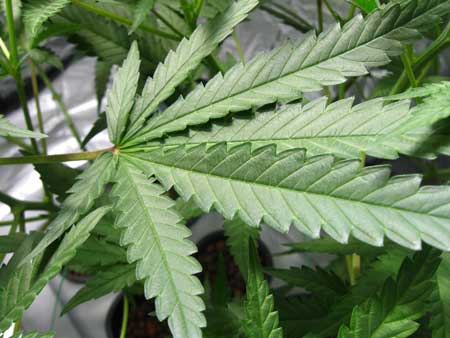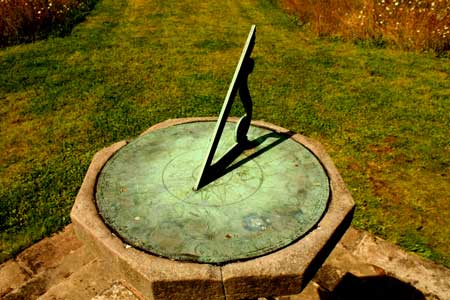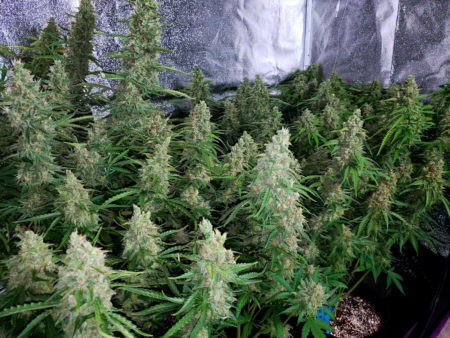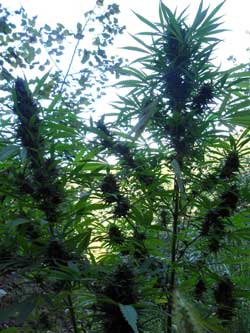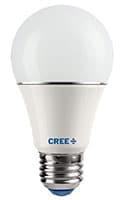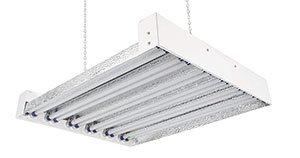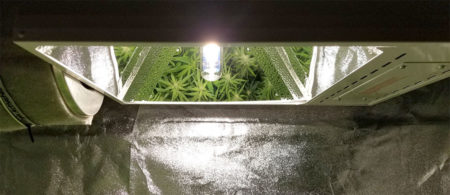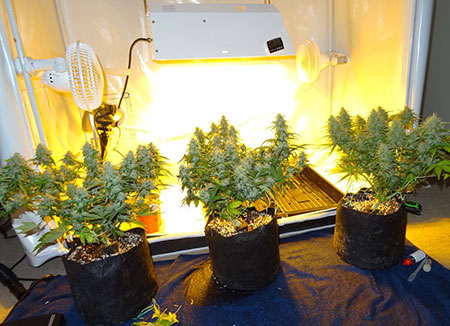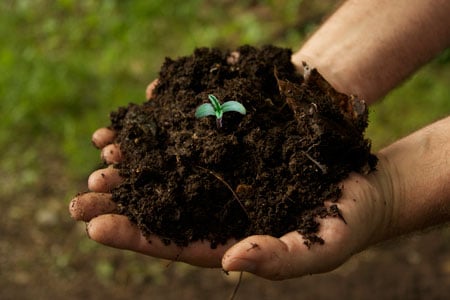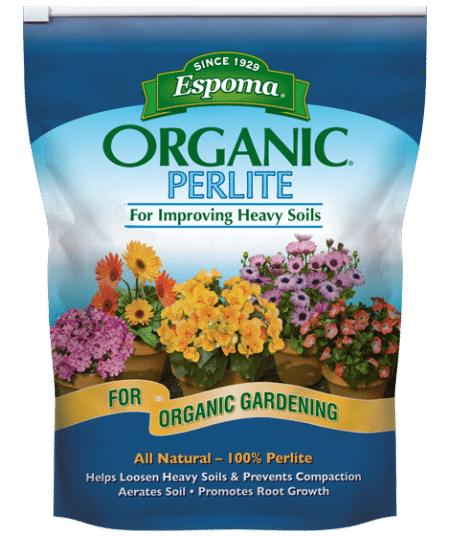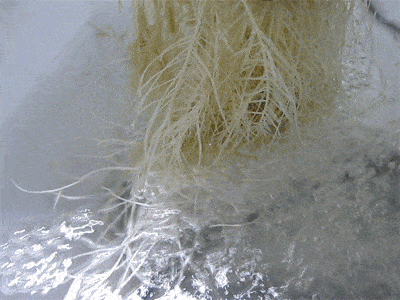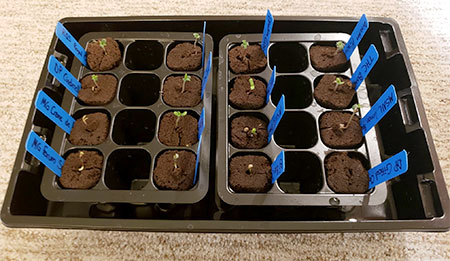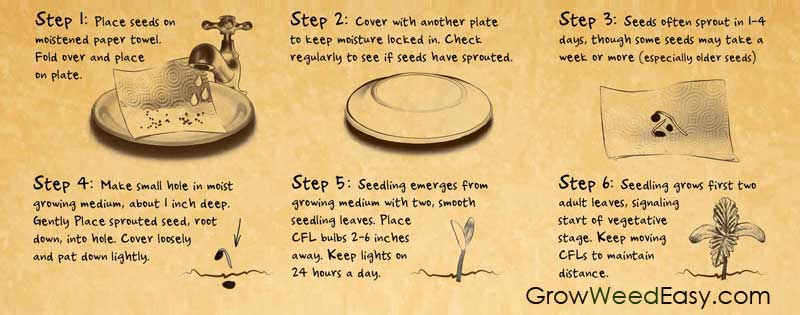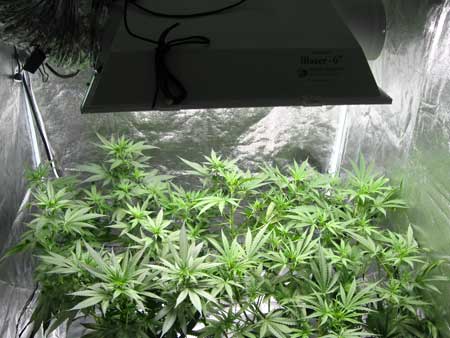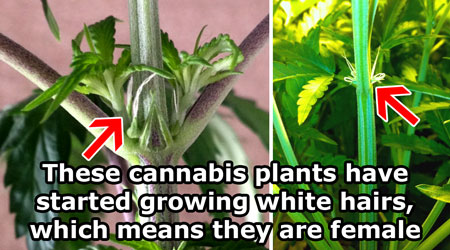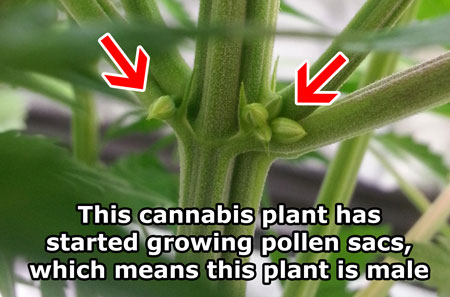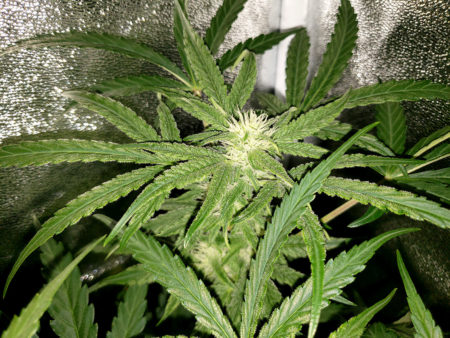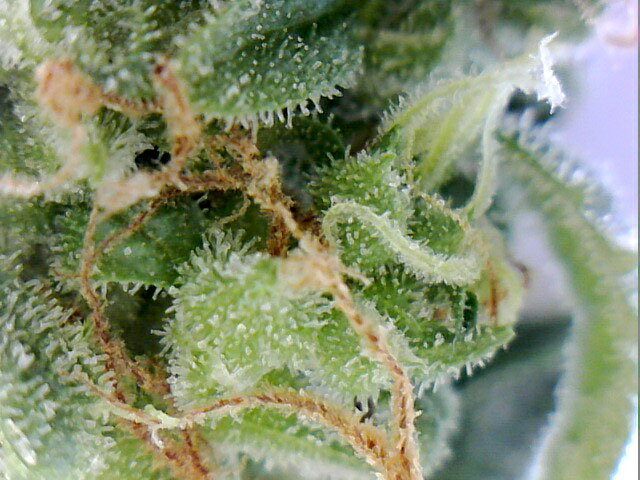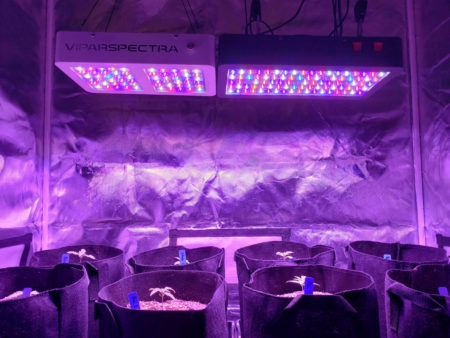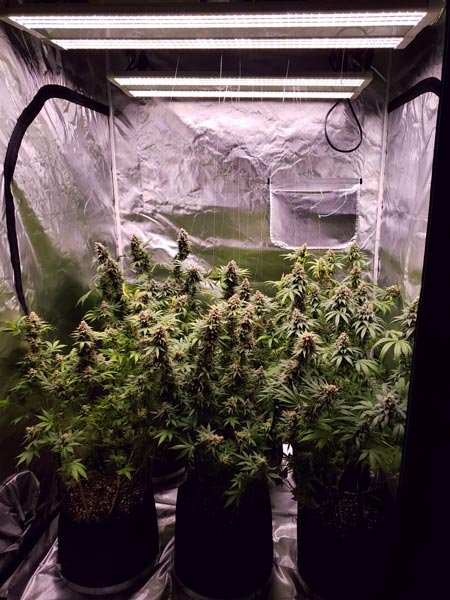Your Comprehensive Cannabis Cultivation Guide:
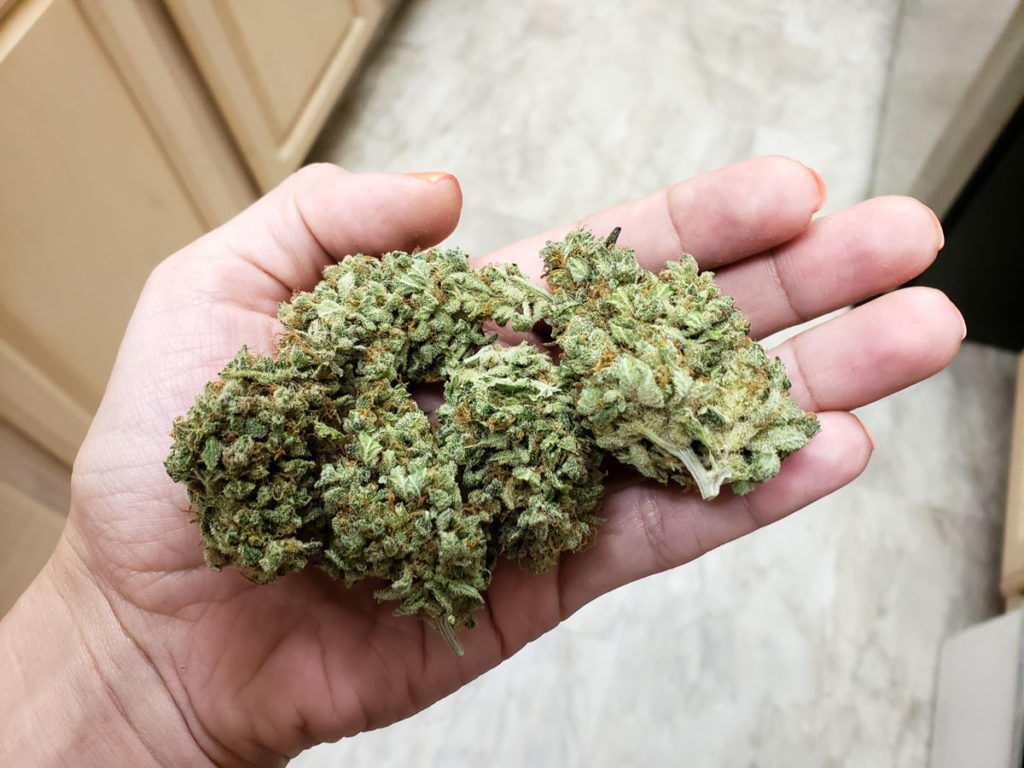 The legalization of cannabis is rapidly spreading across the United States, Canada, and numerous countries worldwide. This favorable change in legislation now permits countless individuals to cultivate their own cannabis legally!
The legalization of cannabis is rapidly spreading across the United States, Canada, and numerous countries worldwide. This favorable change in legislation now permits countless individuals to cultivate their own cannabis legally!
Are you prepared to embark on your journey of cultivating cannabis?
The process of growing cannabis may appear daunting initially, but often it’s simply a lack of accurate information that creates this perception. Many individuals unknowingly complicate the cultivation process unnecessarily, but that changes today!
This comprehensive cannabis growing guide is here to assist you in finding the optimal approach to growing cannabis tailored to your specific circumstances.
Find a grow style for…
- Your grow space
- Your budget
- Your desired yields
Growing cannabis plants at home is indeed a straightforward process. With just a few minutes to spare each day and a designated space like a spare closet or a backyard garden, you can successfully cultivate top-quality buds that rival professional standards.
What does a cannabis plant need to thrive?
In order to thrive and grow, every cannabis plant needs:
Light: Whether you rely on natural sunlight or use artificial grow lights, it is crucial to understand the light requirements of cannabis plants to achieve optimal bud quality and yields.
Growing Medium: While soil is a popular choice, it’s important to note that it’s not your only option for a growing medium. There are alternative mediums available that can be equally effective for cannabis cultivation.
Air: Creating a well-ventilated environment with proper air exchange and a gentle breeze is ideal for cannabis plants’ growth. It promotes healthy airflow and helps prevent issues such as mold or mildew.
Temperature: It is recommended to maintain a temperature range for cannabis plants that is comfortable for humans as well. If it feels excessively hot for you, it’s likely too hot for your plants too. Extreme temperatures can potentially harm and even kill cannabis plants.
Nutrients: You have the choice to purchase pre-formulated nutrients that can be added to your watering routine. Alternatively, you can opt for composting your own super soil, which already contains all the necessary nutrients for your cannabis plants.
Water: Just like any other living organism, cannabis plants require water to survive and thrive. The question of whether tap water is suitable for growing cannabis depends on the quality of your specific tap water. Testing the pH and checking for potential contaminants can help determine if additional filtration or adjustments are necessary.
Remember, understanding and addressing these key factors – light, growing medium, air, temperature, nutrients, and water – will greatly contribute to the successful cultivation of cannabis plants.
When growing cannabis indoors or outdoors, you will need to ensure that it gets the proper amount of these 6 resources.
How long does it take to grow cannabis?
If you were to plant a cannabis seed today, the earliest you could potentially smoke your harvest would be around 9 weeks, provided you choose a quick-finishing autoflowering strain. Autoflowering strains typically have shorter life cycles and can progress from seed to harvest in a shorter timeframe compared to photoperiod strains. However, it’s important to note that specific strains and environmental conditions can influence the exact time required for the plants to mature and be ready for consumption.
Indoor grows tend to be shorter than outdoor grows since you have more control over when the plant starts budding. Auto-flowering grows also tend to be very short. But with shorter grows, you also tend to get smaller yields. Certain strains and certain outdoor grows can take up to 7 months or more.
On average, I’d say it takes a grower about 3 – 5 months to grow, harvest, and cure their own buds.
Learn more about how long it takes to grow cannabis
Avoid the 3 Most Common Mistakes in Cannabis Growing!
One of the most common mistakes made by novice cannabis growers is impulsively conducting experiments without proper research, which can harm or even kill their plants. It is crucial to take a moment to search online and gather information before trying out new techniques. Fortunately, when it comes to growing cannabis, there is a high probability that someone else has already attempted the same idea. Learning from their experiences can save you from unnecessary setbacks.
The next prevalent issue among new growers is the tendency to overlook essential steps, such as understanding light schedules and the significance of root pH levels in preventing nutrient deficiencies. While it is possible to get lucky and achieve successful cannabis growth without taking these steps, the likelihood of ending up with unhealthy or low-yielding plants increases significantly. It is essential to follow all the steps outlined in this guide to ensure a successful harvest of top-quality buds.
Remember, there’s no need to reinvent the wheel. You can benefit from the mistakes and lessons learned by others. Don’t hesitate to look up information or seek advice from experienced growers. By leveraging the knowledge and experiences of the cannabis-growing community, you can enhance your own skills and avoid unnecessary pitfalls along the way.
10-Step Beginner’s Guide to Growing Cannabis
- Step 1: Choose Your Location
- Step 2: Choose Your Light
- Step 3: Choose Your Growing Medium
- Step 4: Determine Your Nutrient Schedule
- Step 5: Where to Get Cannabis Plants
- Step 6: First New Leaves… Life Begins!
- Step 7: Vegetative Stage – Grow Your Plant Big and Strong
- Step 8: Flowering Stage – Buds Start Growing!
- Step 9: Harvest Your Cannabis
- Step 10: Dry & Cure Your Buds Like a Professional
Step 1: Choose Where You Will Grow (Indoors or Outdoors)
Growing cannabis indoors offers a greater level of privacy compared to outdoor cultivation, and it provides growers with enhanced control over their growing environment.
Indoor cannabis cultivation can surprisingly be cost-effective, particularly if you plan to grow a small number of plants. Getting started and maintaining an indoor setup can be affordable, making it accessible to a wider range of growers.
To gain insights into potential yields in different indoor setups, it’s beneficial to explore completed indoor grow journals. These journals provide valuable information on the amount of harvested cannabis you can expect. For example, in my latest 315W LEC grow, I obtained over a pound (497g) of dried and cured cannabis.
Having more control over all aspects of the growing environment empowers indoor growers to consistently produce high-quality buds. However, this power comes with added responsibility. As an indoor grower, the survival of your plants depends entirely on your care and attention. It is crucial to provide everything your plants need to thrive; otherwise, they will not survive.
Remember, indoor cannabis cultivation offers numerous advantages, including privacy and control, but it requires dedicated care and responsibility to ensure the success and well-being of your plants.
You have a wide range of options when it comes to choosing the ideal space for growing cannabis indoors. Here are some suggestions:
Spare room: If you have an extra room available, it can be an excellent choice for setting up your indoor cannabis garden. This provides ample space and allows for better control over the growing environment.
Closet: A closet can be transformed into a discreet and compact indoor grow space. It offers privacy and can be easily managed with the right equipment and ventilation.
Garage: If you have a garage, it can be a suitable location for an indoor cannabis grow. However, it’s important to consider insulation, temperature regulation, and proper security measures to ensure an optimal environment.
Grow tent: Investing in a dedicated grow tent is a popular option for indoor cultivation. These tents provide a controlled environment, efficient light reflection, and easier management of temperature and humidity.
Extra bathroom: In some cases, an unused bathroom can be converted into a small-scale indoor grow space. This option is particularly advantageous for its built-in water source and potential for easy ventilation.
Unique setups: With creativity, you can explore unconventional options like using a modified computer case or constructing a Space Bucket (a compact, DIY setup) to grow cannabis in limited spaces.
When selecting your indoor grow space, consider the temperature factors as well. Keep in mind that once you have your grow lights operational, the temperature in your grow space will likely rise. It’s essential to monitor and regulate the temperature to maintain an optimal range for healthy plant growth.
Remember to prioritize access to water and fresh air in your chosen space and take into account the necessary equipment and adjustments needed to create a suitable indoor growing environment.
 Young growing cannabis plants grow fastest when temps a bit warmer, in the 70-85°F (20-30°C) range.
Young growing cannabis plants grow fastest when temps a bit warmer, in the 70-85°F (20-30°C) range.
When plants are a bit older, in the budding/flowering stage, it’s best to keep temps slightly cooler, around 65-80°F (18-26°C) to produce buds with the best color, trichome production and smell.
Maintaining control over the temperature of your grow area is crucial for successful indoor cannabis cultivation. The use of grow lights generates heat, and the temperature can vary depending on the power of your lights.
When setting up a small space with multiple bright lights, it is highly likely that you will need to install an air conditioner in addition to your exhaust system. This is essential to maintain the temperature within the appropriate range.
In the case of growing a few plants in a grow tent or box, a fan can often suffice to pull hot air away from the lights and direct it out of a window, ensuring sufficient cooling.
It’s important to note that certain types of lights generate more heat than others. In Step 2, we will assist you in selecting the right lights for your specific space, taking into account factors such as heat output and efficiency. This will help you make an informed decision and minimize potential heat-related problems during the cultivation process.
Remember, efficient temperature management, including the installation of air conditioning and fans, is crucial when using bright lights in a confined space. By finding the appropriate balance, you can ensure a suitable temperature range for your cannabis plants to thrive.
Growing cannabis outdoors offers cost advantages compared to indoor cultivation since you don’t need to invest in grow lights or create an indoor grow area. However, there are certain considerations and challenges associated with outdoor growing:
Privacy/Stealth: Growing outdoors may require you to address privacy concerns, especially if you need to keep your cultivation discreet. Ensuring proper screening or using strategic planting locations can help mitigate this issue.
Pollination: Outdoor cultivation exposes your plants to the risk of pollination from nearby male cannabis plants or even hemp fields. This can result in reduced flower quality and seed development in your cannabis plants if you’re growing for buds.
Security: Outdoor gardens are susceptible to theft or unwanted visitors. Implementing security measures such as fencing, cameras, or strategic garden placement can help deter theft and protect your plants.
Pests and Wildlife: Outdoor cannabis plants are more vulnerable to pests like insects, deer, or other wildlife. Taking preventative measures such as regular inspection, pest control methods, or physical barriers can help protect your plants.
Environmental Factors: While the sun provides free natural light, you must adapt to environmental conditions. Proper watering is essential, especially during dry spells or protecting plants from excessive rain and overwatering.
Temperature Considerations: Cannabis plants are sensitive to extreme temperatures. It’s important to monitor and protect your plants from freezing temperatures or excessively hot conditions, as they can be detrimental to their health. Setting up a small greenhouse or providing shade can help regulate temperature and protect your plants from extreme weather.
By selecting the right strain for your local climate and taking necessary precautions, outdoor cannabis growing can be a cost-effective method, leveraging the natural resources available. However, it requires careful attention to environmental factors, security, and protection against potential threats to ensure successful cultivation.
Learn more about the difference between growing cannabis indoors vs outdoors
Step 2: Choose Your Grow Light – What kind of light do you need to grow cannabis successfully?
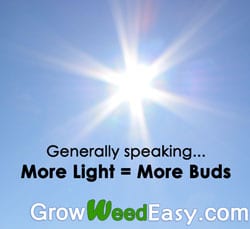 There are lots of different grow lights for cannabis, including:
There are lots of different grow lights for cannabis, including:
- The Sun
- Compact Fluorescent Light Bulbs (CFLs) & Household LEDs
- Other Fluorescent Lighting (T5 / T8)
- LEC (CMH) grow lights
- LED grow lights
- Metal Halide (MH) & High-Pressure Sodium (HPS)
When growing cannabis outdoors, it is crucial to ensure that your plants receive a minimum of 8+ hours of direct sunlight each day for optimal results.
For the best outcomes, it is recommended that your plants receive direct sunlight between the hours of 10 am and 4 pm. However, the more light they receive, the better. Cannabis plants have high light requirements compared to many other plant varieties. As a result, growing them solely in a window is not ideal (although some growers start their seeds in sunny windows before transitioning them to a more suitable final location).
Direct sunlight provides the intensity and spectrum of light necessary for robust growth and the production of quality buds. Adequate sunlight exposure promotes photosynthesis and the development of healthy, vigorous plants.
Ensure that your outdoor growing location offers a suitable spot where your cannabis plants can receive the required amount of direct sunlight throughout the day. This will help maximize their growth potential and overall yield.
Household Lighting: Compact Fluorescent Light Bulbs (CFLs) & Household LEDs
Household LEDs are what people commonly use to light up their homes. They aren’t really made for growing plants but can be a good way to get your feet wet in the growing world without a significant investment. They lack the power of dedicated grow lights but can get the job done. Home LEDs like these are dirt cheap, and you can usually buy them from any big-box store without arousing suspicion. Not ideal, but they can be used to “dip a toe” into growing and get an idea whether you want to invest in a real grow light.
Note: There are super cheap LEDs like the HLG 100 R-spec that gets amazing bud quality growing weed and costs under $150. It’s a small light that barely puts off any heat and can be kept in a space as short as 3-4 feet (learn how to grow mini plants) and still can yield several ounces. I highly recommend investing in something like that over household LEDs.
Fluorescent Lighting (T5 High Output)
These lights are traditionally made for seedlings and plants that need lower light intensity than cannabis. If you do get fluorescent lighting, I recommend sticking with a High-Output T5 light since they are the brightest option in this group. Even so, I generally recommend changing to LED grow lights for the cannabis flowering stage unless you do major plant training (to keep plants very short) since these lights have a short light brightness range and must be kept very close to the tops of your plants. Another issue with fluorescent lighting is they tend to get very hot compared to the amount of electricity used. Lastly, fluorescent lights get only 1/4 -1/2 the yields per watt compared to LED grow lights. Learn more about growing cannabis with fluorescent lighting.
LEC (Light Emitting Ceramic) is a brand name for a type of light (CMH – Ceramic Metal Halide) that has existed for quite a while. This type of light has come back into vogue after some rebranding, partly because it has some very positive traits for growing cannabis compared to HPS lighting. For one, LECs have a more natural color that makes it easier to care for and diagnose plant problems. Plus, it’s a lot better for security to have a light that doesn’t scream “WEED GROWING HERE!” like the unearthly yellow hue of an HPS. They produce significant levels of UV light, which can possibly increase trichome production. Additionally, they don’t seem to emit EMI (Electro-Magnetic Interference) as much as their noisy HPS cousins which means you’re less likely to have a HAM radio enthusiast accidentally tracking down your grow. The plants grew surprisingly fast under a 315 LEC and we were impressed by the yields we achieved on our first grow.
LED grow lights are much more efficient and get better bud quality/yields/potency than household LEDs or fluorescent lighting. They are top-tier grow lights on par with any grow lights including HID lighting (HPS, LEC). They’re visually attractive, easy to use, and tend to be more appealing to growers because they’re not as ‘old-fashioned’ (though they often cost more). Plus in some tests, they’ve been shown to produce bud that is actually more potent than the same clones grown under different grow lights. In fact, LEDs are the only grow lights that have seen major technological research and development in the past 10 years, and the technology is still improving every day as LED manufacturer’s fine-tune their LEDs with extensive testing on live cannabis plants.
LED grow lights work great for growing cannabis and some companies have been refining their models for years (the combination of parts is almost like a company’s recipe). Each LED model is different and needs to be kept a different distance away from your plants. It can sometimes be hard to find any “standard” advice about growing with LEDs, yet these days there are quite a few brands that are well-tested and trusted by cannabis growers and these brands tend to have good support for questions. When in doubt, it’s always a good idea to just ask the manufacturer about how far away the lights should be kept, as that’s where new growers are most likely to mess up.
Metal Halide (MH) & High-Pressure Sodium (HPS)
MH/HPS grow lights (like the light pictured here) are a type of “HID” light like LECs. A combination of MH/HPS is what most commercial growers use when growing cannabis indoors. They are surprisingly cheap to buy and set up, especially considering how incredibly powerful they are.
HID lights work very well for growing cannabis and produce consistently good results indoors. However, the higher-wattage HID lights tend to run hot and can leave a big mark on your electricity bill. You definitely want to make sure you’re getting the exact right lights for your space so you don’t pay for more light than you really need. HID lighting (HPS in particular) has another problem in that it’s been less popular over the last few years. This has made it increasingly difficult to find quality models if you’re not looking for a huge 1000W.
Get a detailed breakdown of all the different types of cannabis grow lights
→Don’t know what type of lighting to pick? Choose your grow type based on your desired yields and starting cost…
2’x2′ Grow Tent – Small
- 65W – HLG 65 LED Grow Light
- 1-3 oz per harvest
- $300 to get started
- 100W – SF-1000 LED Grow Light
- 2-4 oz per harvest
- $430 to get started
2’x4′ Grow Tent – Medium
- 200W – SF-2000 LED grow light
- 5-11 oz per harvest
- $555 to get started
- HLG 350R LED grow light
- 8-14 oz per harvest
- $700 to get started
- 315 LEC or 400W HPS (dimmable)
- 7-16 oz per harvest
- $745 to get started with 315 LEC
- $495 to get started with a 400W HPS
3’x3′ Grow Tent (Square shape is better in some spaces) – Medium
- 300W LED – Mars Hydro FC-E3000
- 7-13 oz per harvest
- $475 to get started with FC-E3000
- 315 LEC or 400W HPS (dimmable)
- 7-16 oz per harvest
- $745 to get started with 315 LEC
- $495 to get started with a 400W HPS
4’x4′ Grow Tent – Large
- HLG Blackbird 600W LED grow light
- 11-22 oz per harvest
- $995 to get started
- 600W HPS (dimmable)
- 10-21 oz per harvest
- $495 to get started
Example of a 4’x4′ grow tent (easily yield a pound)
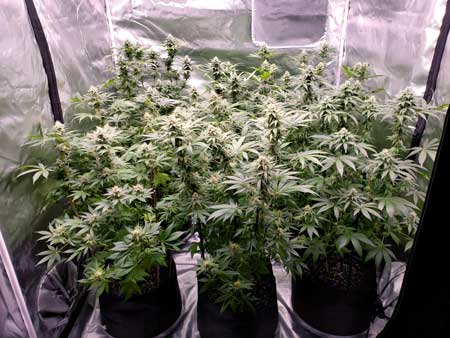
Step 3: Choose Your Growing Medium
Each growing medium that you can use has different care and watering requirements.
These are the most common grow mediums:
- Soil – grow in organic composted super soil for the easiest growing experience, or start with the popular Fox Farms Ocean Forest soil mix (FFOF already contains enough nutrients to last the first month of your young plant’s life).
- Soilless Mix – anything besides soil including coco coir, perlite, vermiculite, etc. (all soilless mixes are technically considered hydroponic growing since there’s no soil).
- Directly in Water / Hydroponics – Get some of the fastest plant growth and biggest yields possible, especially when combined with HID/LEC/LED grow lights.
- Less Common Types of Hydro – Some people grow with plant roots suspended in misted air (aeroponics) or in a tank with fish (aquaponics), but these are relatively less common for cannabis growers.
What’s the Best Soil? Your absolute best option would be to compost your own soil (or purchase composted soil) which gets incredible taste results but does take a little more work (or money if you buy it).
For those of us who prefer pre-made mixes, I recommend starting with the popular Fox Farms Ocean Forest soil (often referred to as FFOF) since it’s already supplemented with plenty of nutrients that work very well for young cannabis plants. It’s a rich yet still somewhat airy soil that is made for plants just like cannabis and has been used by growers for years.
If you have limited soil options, choose an organic potting mix which is usually available in some form in the gardening section of any big-box store. As long as you use good cannabis nutrients (more on that below), a regular organic potting mix will work just fine.
Common cannabis-friendly potting mix brands in the US:
- Fox Farms Ocean Forest Soil (top-tier)
- Fox Farm Coco Loco soil (another top-tier soil that’s mixed with coco for faster growth and less chance of overwatering)
- Black Gold All Organic Potting Soil (good)
- Espoma Organic Potting Mix (okay)
- Miracle-Gro Organic Choice Potting Mix (worst) – If you say you’re growing in Miracle-Gro soil, a lot of cannabis growers will wag their fingers at you. In addition to poor drainage, the original Miracle-Gro soil contains slow-release Nitrogen which is good for vegetative plants but bad for bud growth in the flowering stage and you can’t really rinse it out. Too much Nitrogen in the flowering stage can lower yields as well as possibly add a green or chemical “taste” to buds. However, if you’re going to use Miracle-Gro, their Organic Choice Potting Mix doesn’t have slow-release nutrients, which makes it a better option for growing cannabis than their standard version. It still drains poorly even with perlite, but if you’re desperate it does the job and you can get good results if you use good nutrients. The truth is that many growers have made it to harvest over the years with Miracle-Gro, despite some problems along the way, and even though it’s definitely not optimal, sometimes you have to do what you have to do!
Pick up a bag of perlite (found in the garden section) to help the soil drain better unless it already contains perlite. Perlite looks like little white rocks and should be mixed in so you have about 70% soil and 30% perlite. Should you add perlite to your soil?
What type of pot should I use for soil or soilless growing mediums?
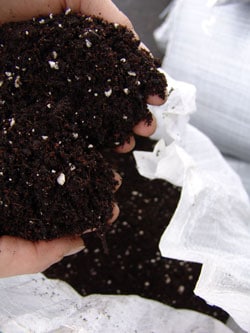 If you’re having a tough time deciding on a grow medium, you might want to think about starting with a mix of coco coir and perlite. It’s easy and low-maintenance. That’s how I got started growing (with CFLs as grow lights) and it’s also what I used in my 1-pound 315W LEC grow. Growing with coco coir can be a good choice for beginners because it’s cheap, holds water well, and doesn’t have as many of the problems associated with soil (bugs, root problems, etc.). Yet since it’s hand-watered, it’s intuitive and has a lot of the ease of soil growing.
If you’re having a tough time deciding on a grow medium, you might want to think about starting with a mix of coco coir and perlite. It’s easy and low-maintenance. That’s how I got started growing (with CFLs as grow lights) and it’s also what I used in my 1-pound 315W LEC grow. Growing with coco coir can be a good choice for beginners because it’s cheap, holds water well, and doesn’t have as many of the problems associated with soil (bugs, root problems, etc.). Yet since it’s hand-watered, it’s intuitive and has a lot of the ease of soil growing.
I’ve heard many people recommend against growing cannabis hydroponically for your first time because it’s “too complicated,” yet I’ve seen growers succeed at every grow type even on their very first grow. If you really want to grow hydroponically, I recommend you don’t waste your time doing something else first. If you’re passionate about hydroponic growing and do your research before you get started, there’s no reason you won’t be able to do incredibly well your first time. Read our bubbleponics tutorial to see how GrowWeedEasy.com co-creator Sirius got started growing cannabis with top-fed DWC on his very first grow.
Learn more about different grow types here
Step 4: Choose Your Nutrients
Soil growers – unless you’re growing with composted super soil, you will need to get cannabis nutrients made for soil to make sure your plants produce at their best. Even if you started with an amended soil like FFOF, you will still need to start adding nutrients once you reach the flowering/budding stage as cannabis plants are heavy feeders and your plants will have already used up most of the nutrients in the soil by the time budding begins.
Soilless & Hydroponic growers – If you are growing in any medium besides soil, like a soilless mix or directly in water, you will want to get cannabis nutrients specifically made for hydroponics. Some nutrients are even more specific; for example, Canna Coco is formulated to work best for growing weed in Coco Coir. For hydroponic grows, I highly recommend the General Hydroponics Nutrient Trio – here’s the cannabis-friendly GH trio nutrient schedule I use with my cannabis plants.
One nutrient system to rule them all…
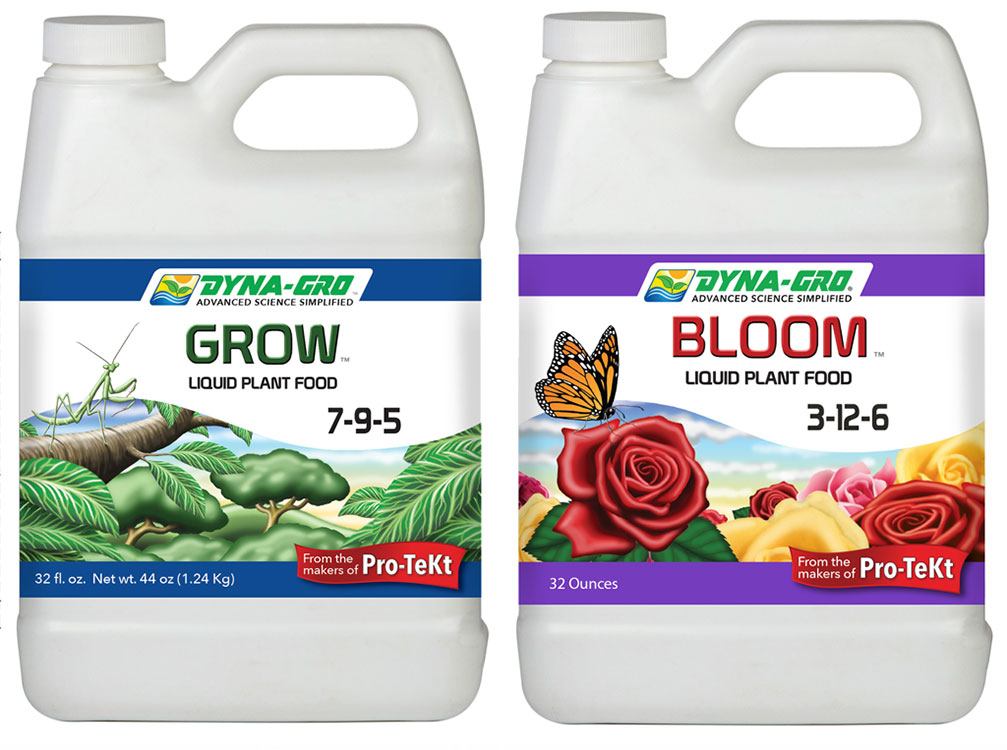 Looking for a suggestion? One of the simplest (yet inexpensive) nutrient systems that work extremely well for beginning cannabis growers is Dyna-Gro (Grow, Bloom)
Looking for a suggestion? One of the simplest (yet inexpensive) nutrient systems that work extremely well for beginning cannabis growers is Dyna-Gro (Grow, Bloom)
Dyna-Gro can be used at half-strength in soil, water, coco coir, or any growing medium and works amazingly well for growing cannabis. It does not build up salt in your growing medium like many other inexpensive fertilizers, and it will never clog your hydroponic system.
Just use the “Grow” bottle during the Vegetative stage and the “Bloom” bottle during the Flowering stage. You can actually follow the instructions on the bottle. It’s super simple.
Like all nutrient systems, avoid starting at full strength or it can burn your plants! Learn more about nutrient burn. Only raise the dosage if you notice that your lower leaves are turning yellow and falling off (except in the last 2-4 weeks before harvest, when yellowing lower leaves is a natural part of the maturation process)
Learn more about cannabis-friendly nutrient systems
Is my tap water “good enough” for growing cannabis?
Before I address pH, let’s talk about the “hardness” of your water…
The “hardness” of water describes how much extra “stuff” (like minerals and/or impurities) is contained in your regular tap water. You can contact your local water supplier for more information (ask for a “municipal water report”), or you can test the PPM of your water at home. Generally, as long as your water has less than 200-300 PPM (parts per millions) of extra stuff, it should be okay to use it for growing. If you are worried about the quality of your tap water, you can choose to use purified or Reverse Osmosis (RO) water, but you may then need to add extra Cal-Mag and possibly a few other supplements to help make up for the random minerals and nutrients that are normally found in tap water. I’ve personally always grown with straight tap water (in a big city in California with a natural PPM around 370, which is pretty high), and I’ve never had a problem. However, some places have very hard water or tap water with unacceptable impurities, and growers in these areas will likely need to use purified water to get the best results.
Step 4B: Nutrients, continued: The Importance of Root pH
It’s important to maintain the pH of your root environment to prevent nutrient problems.
The easiest way to do that is to test the pH of your water before you water your plants or add water to your reservoir.
There are certain types of grows (such as when growing cannabis in organic composted super soil) where you don’t need to test your pH unless you run into problems. This is because with a properly composted super soil, you actually have a microbial colony living in the soil that will take care of the pH and hand-deliver the nutrients to the roots of your plants for you. However, this is a rare exception to the pH testing rule, and almost all growers need to regularly test and maintain pH for a successful grow. If you’re not growing in super soil that you have amended and composted (or purchased) yourself, testing and maintaining pH is a MUST.
Some growers will always get lucky and successfully grow weed without testing the pH of their water, but most people who don’t test for pH will start seeing signs of nutrient deficiencies and other nutrient problems.
If the pH at the plant roots is too high or too low, your plants won’t be able to absorb nutrients properly.
Even if plants do fine in the vegetative stage, cannabis plants tend to be more picky and prone to problems in the flowering/budding stage. Many growers have written in to tell me they got all the way to the flowering stage without testing pH, then were surprised that they start running into nutrient problems as soon as the plants start budding. In order to make sure this doesn’t happen to you, it’s important to get in the habit of testing pH right from the beginning!
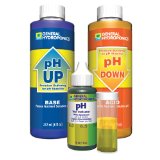 Even if the right amounts of nutrients are present, your cannabis plants simply cannot absorb them if the pH isn’t in the correct range.
Even if the right amounts of nutrients are present, your cannabis plants simply cannot absorb them if the pH isn’t in the correct range.
It’s actually really easy, quick, and cheap to learn how to check and adjust the pH of your water, and there are “pH test kits” specifically made for this purpose.
After you get the hang of it, checking and adjusting the pH and will take you less than 3 minutes each time you water your plants. And your results (monster yields with huge buds and healthy plants) will speak for themselves.
Soil: Maintain 6.0 – 7.0 pH
Hydroponics: Maintain 5.5 – 6.5 pH
Getting the pH exactly right isn’t nearly as important as checking regularly and making sure it stays within these ranges.
Click here for more information on pH testing.
Step 5: Get Your Cannabis Plants (& Choose Your Strain)
For those growers lucky enough to know other cannabis growers in real life, getting plants is usually pretty simple. Many cannabis collectives and dispensaries will happily sell you clones though they tend to be a little less liberal when it comes to selling seeds. A great advantage of purchasing clones or seeds from a trusted source is that you know you can trust the genetics you are receiving.
Yet many people do not know any other growers in real life. For these soon-to-be growers, the best option may be to purchase cannabis seeds online from a breeder or seed bank.
Surprising Fact: No one in the US has ever gone to jail or prison for simply ordering cannabis seeds online from overseas.
If you are considering this for the first time, you may be surprised to learn that, because of the way the laws about customs work in America, it is actually reliable and safe to buy your cannabis seeds online from a reputable seed bank as long as you get it from outside the US (sending seeds from one place to another in the US can get you in big trouble though!).
Learn more about safety precautions when ordering seeds online
Get Seeds – View a list of tested & trusted seed vendors: https://www.growweedeasy.com/seeds
Get Clones – You need to know someone with live female cannabis plants if you want to get clones. Many cannabis dispensaries and collectives will sell clones to prospective growers, or you might know someone who can give you a clone. Learn how to make your own cannabis clones!
Choose the Right Cannabis Strain
13 Things I Wish I’d Known Before I Started Growing
Step 6: How to Germinate Cannabis Seeds
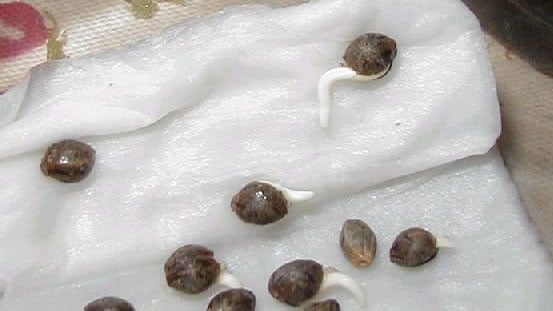
- If you have already a rooted clone (a live cannabis plant) please skip right to Step 7.
There are many methods for cannabis seed germination.
Personally, I think one of the easiest ways to germinate a cannabis seed is to place it directly in a specialized starter cube like a Rapid Rooter.
Just keep the Rapid Rooters moist (but not soaking) and warm. It can help to put your tray on a seedling heat mat. Seedlings should pop in a few days to a week.
So far Rapid Rooters with a heat mat have given me the best germination rates of any method. They work with any growing medium, too – once the seedling has emerged, you can stick the cube directly into your growing medium or hydroponic system.
Learn more about germinating seeds via Rapid Rooter
Another popular way to germinate seeds is via the paper towel method.
Paper Towel Method:
You will need…
- Cannabis seeds
- 2 plates
- Paper towels
- Water
- A place to plant sprouted seeds
NOTE: If seedlings seem to be “stretching” upwards or growing very tall, usually it’s because they want more light.
Step 7: Vegetative Stage – Grow Your Plant Big and Strong
Once your plant grows the first “regular” set of leaves, it’s pretty much officially in the vegetative stage. How long is the vegetative stage?
Cannabis plants keep getting bigger and bigger with long days (vegetative stage) and start making buds when they get long nights (flowering stage).
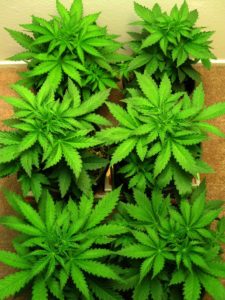 Young growing cannabis plants grow fastest when the temperature is a bit warmer than a comfortable room temperature, around 70-85°F (20-30°C). But as long as it doesn’t get freezing cold or burning hot, your plants should be able to grow in a wide range of temperatures.
Young growing cannabis plants grow fastest when the temperature is a bit warmer than a comfortable room temperature, around 70-85°F (20-30°C). But as long as it doesn’t get freezing cold or burning hot, your plants should be able to grow in a wide range of temperatures.
How often do I water my cannabis plants?
In this stage, your plant will focus ONLY on getting big and strong. Buds and flowers are not part of the plant’s vocabulary yet.
If you’re feeding your plant with additional nutrients, start at half strength as it can be easy to burn your young cannabis plants. Bring to 3/4 strength one plant starts growing vigorously and if your plant displays signs of needing more nutrients even though the pH is in a good range.
Only feed nutrients at full strength if the plant is showing signs that it needs more nutrients (lower leaves are turning lime green, then yellow, then falling off – the first sign of a nitrogen deficiency, the most common type of deficiency – if the plant is not getting enough nutrients).
At this stage, you can’t tell if one of your cannabis plants is going to be a boy or a girl yet. Wait, why do I care if my plant is a boy or a girl?
Light
- Give plants 18-24 hours/light a day in the vegetative stage when growing indoors. 18 hours of light a day is preferable, 24 is for the experimental type of grower.
- If growing outdoors, try to make sure your plant gets strong, direct light for most of the day, at least from 10am-4pm, and more if possible.
The size your plant gets in this stage will have a huge impact on the final size of your plant.
How do I control the way my cannabis plants grow during the vegetative stage?
Indoor growers – When do I switch my plant from the vegetative stage to the flowering stage?
How can I tell when the vegging stage ends?
What do I do if I run into problems?
Step 8: Flowering Stage
This is the stage where your plants start making buds. This stage will last until harvest!
During this stage, you will need to…
- Change to 12-12 Light Schedule
- Identify Gender of Cannabis Plants
- Get Rid of any Males
We’re getting to the exciting part!
Most strains of cannabis begin this stage once they’re getting at least 12 hours of uninterrupted darkness a night. Autoflowering cannabis plants will start the flowering stage without needing a lighting change.
Light
- Indoors, you must change to a 12-12 light schedule, with 12 hours of light & 12 hours of uninterrupted darkness each day (usually accomplished by putting your lights on a timer) to get your cannabis to start flowering (making buds). When should I change my light schedule to 12-12?
- Outdoors, your weed will naturally start flowering when the days get short enough, usually a few months before winter.
The flowering stage is where your plant goes through “puberty” and basically reveals whether they are a boy or a girl.
Unfortunately, for regular seeds, half your plants will end up female and half will end up male. That’s why a lot of growers prefer starting with clones or buying feminized seeds – all the resulting plants will grow into females.
As cannabis growers, we’re only looking for females as female plants are the only ones that make buds. Male plants just make pollen sacs (balls) that cannot be used for smoking.
A week or two after you initiate the 12-12 light schedule (or naturally in the wild), your plants will reveal their gender…
Female plants start growing wispy white hairs at the tops of branch joints. These are the pistils of her flowers/calyxes. You’ll get bunches of these calyxes growing on top of each other to make buds, and each calyx will have a few white hairs coming out of it. This is great news! It means this plant will eventually grow beautiful weed with buds/flowers/ganja that you can smoke.
Male plants start growing balls/pollen sacs with no white hairs/pistils. Unfortunately, most male plants do not develop psychoactive properties like girls do in their flowers. Plus, male plants can pollinate your female plants and cause them to make less bud and more seeds. Therefore, most serious cannabis growers choose to remove and dispose of male plants as soon as they show their sex.
Note: The sturdy green growths are not pistils, they are always there on both boy and girl plants. When looking for gender, you’re specifically looking for white wispy hairs (pistils).
Learn more: Is my plant a boy or a girl?
Ok, so you’ve gotten rid of your male plants. Your female plants will be growing more and more white hairs and before you know it, actual buds/flowers/trees are forming. Woohoo!
Now that you’re fully in the flowering stage, it’s best to keep temps slightly cooler, around 65-80°F (18-26°C) to produce buds with the best color, trichome production and smell. Learn more about what you need to do in the flowering stage to produce top-shelf buds.
How to Increase Overall Bud Quality and Appearance
It’s important to pay close attention to your cannabis plants during the flowering stage. This is because in this stage your plant is much more likely to suffer from nutrient problems as they’re focusing all their energy on growing buds.
“Flushing” Your Plants Before Harvest
Step 9: Harvest Your Weed
When to Harvest Weed? Is She Ready for Harvest?
- Wait until your buds stop growing new, white hairs. By this point, your buds should be fragrant (the whole grow room or area will likely smell strongly of cannabis), plump, and ‘filled out’.
- Wait until at least 40% of the white hairs have changed color (darkened) and are curling in. This marks the beginning of the harvest window. Buds harvested now will have more of a speedy effect and are not at full potency.
- Harvest when 50-70% of the hairs have darkened for highest THC levels
- Harvest when 80-90% of the hairs have darkened for more a couchlock, anti-anxiety effect (some of the THC has turned into the more relaxing CBN)
The hardest part of growing cannabis for many new growers is waiting for the right time to harvest.
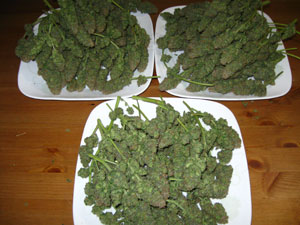 There are additional cannabis harvest methods that are much more precise – such as using trichomes to know when to harvest your buds.
There are additional cannabis harvest methods that are much more precise – such as using trichomes to know when to harvest your buds.
Learn exactly when to harvest your cannabis (with tons of pictures and explanations)
I sometimes get asked how to harvest weed… (i.e. cut it down from the plant)
Just get a sturdy pair of scissors and cut the plant down in the most convenient way possible. Seriously…that’s it!
Trimming comes next; it’s one of the most rewarding and physically taxing parts of the entire grow, but it’ll be worth it!
Step 10: Dry and Cure Your Newly Harvested Buds
After you have cut off and trimmed all of your glittery, beautiful fat buds, you will want to hang them upside down in a cool, dark place with plenty of ventilation so that they can dry out.
Learn how to dry and cure your buds like a professional, every time
Dry buds slowly for best results and check often for mold or overdrying. You’ve worked way too hard to lose your crop now!
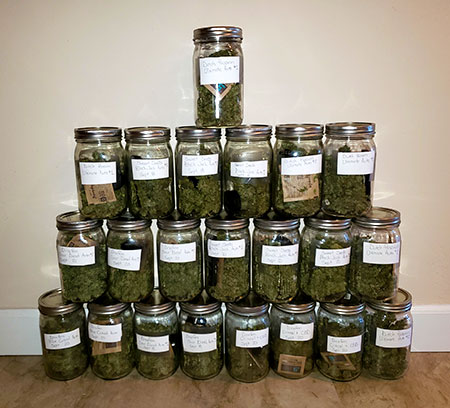 After your cannabis buds have dried (thin stems snap, but the thicker stems are still a bit bendy), it’s time to start curing them so they’re smooth, taste good, smell good, and have the best effects.
After your cannabis buds have dried (thin stems snap, but the thicker stems are still a bit bendy), it’s time to start curing them so they’re smooth, taste good, smell good, and have the best effects.
To cure your buds, put them in tightly closed quart-sized mason jars in a cool dark place. Fill each jar loosely about 3/4 of the way full.
For the first 2 weeks of curing, open the jars once a day for several seconds to get fresh air in your jars and release any moisture.
If your buds feel moist when you check on them, leave the tops of the jars off until the outsides of the buds feel dry to the touch. Too-moist bud is what causes mold!
Special products like “Boveda 62% Humidipaks” will make curing a lot easier, as they will naturally regulate the humidity in your jars.
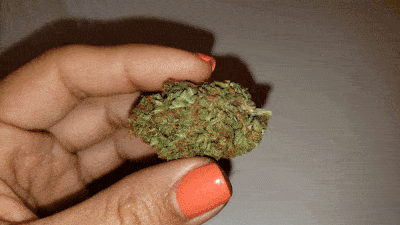 After your cannabis has been curing for at least 2 weeks, and they haven’t felt wet every time you’ve checked the jars for at least a week, you can start opening the lid once a week instead of once a day.
After your cannabis has been curing for at least 2 weeks, and they haven’t felt wet every time you’ve checked the jars for at least a week, you can start opening the lid once a week instead of once a day.
Some people only cure their bud for 1-2 weeks total while others cure their bud for 30 days or more. Because you need to open the jar regularly, you can always sample some as it’s curing to get a feel for whether it’s done or not.
I personally think that cannabis tends to be more potent if you cure it for at least a month.
Curing for longer than 6 months doesn’t do anything, and cannabis can become less potent over time as THC turns to CBN. Keep your harvest in a cool, dry, airtight space for long-term storage.
Read the complete drying and curing tutorial – no more guesswork!
That’s it! 10 Simple Steps and You’ve Got Your Very First Cannabis Harvest!
Check It Out!
FOR SERIOUS GROWERS ONLY
Are you interested in… LED Grow Lights?
As I mentioned earlier, many models of LED grow lights are not suitable for cannabis growers, especially old LEDs and generic LEDs which weren’t tuned for a plant like cannabis.
Avoid old-technology “blurple” LEDs. They don’t get the best yields or growth when growing cannabis. When I’ve done side-by-side tests, the buds grown under blurple LEDs were also lower in THC than the same strains grown under another grow light
But when you’ve seen someone produce great cannabis with a particular brand or model of LED grow light, you know that the lights will work for growing cannabis. And if you have access to their grow notes, you’ll also know exactly how to use the LED to get the best results.
And you’ve probably heard the incredible benefits of LEDs… low electricity usage, low heat, no ballast… you just plug the LED panel directly in the wall. Fans are built right in, and many high-quality models don’t need any additional cooling.
But which LED companies can you trust?
Modern LEDs that are good for growing weed produce wide-spectrum light that often has a pinkish tint, but never the “blurple” you saw on old LEDs
Jump to…
Complete Basics Guide: Learn How to Grow Cannabis
How Long Does It Take to Grow Cannabis?
Where can I safely get medical strains?
Advanced cannabis growing techniques
Wanna “steal” this article?
Here at GrowWeedEasy.com, we are dedicated to getting this information into as many hands as possible. You are welcome to republish this entire article as long as you do not edit, remove or otherwise change any part of it without permission.
Please don’t hesitate to Contact GrowWeedEasy.com with any questions.
Happy growing!


